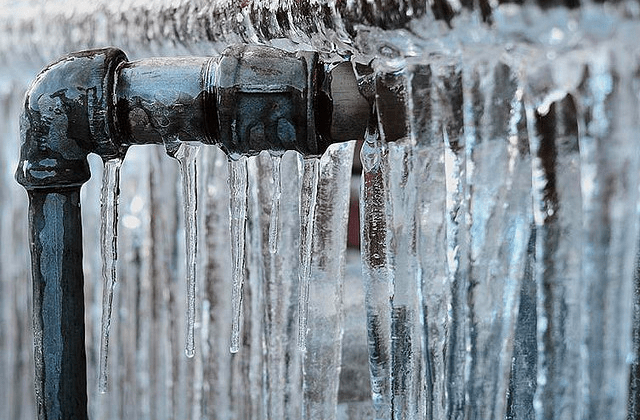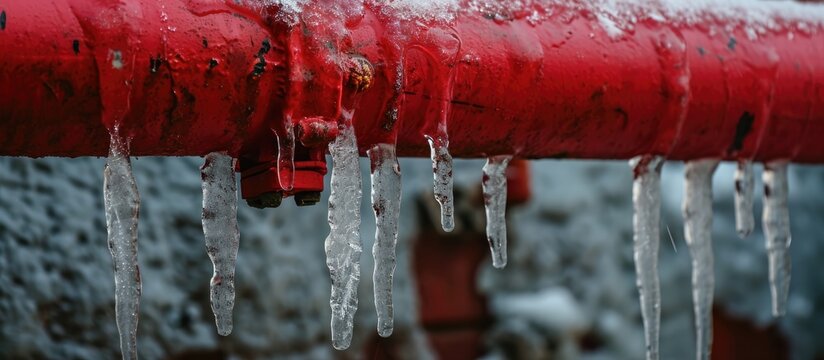Avoiding Frozen Plumbing: Top Strategies for Winter
Avoiding Frozen Plumbing: Top Strategies for Winter
Blog Article
This post following next on the subject of Winter Plumbing Precautions: Preventing Frozen Pipes is fairly enlightening. You should investigate it.

Winter can wreak havoc on your plumbing, especially by freezing pipes. Here's exactly how to avoid it from occurring and what to do if it does.
Intro
As temperature levels decline, the threat of icy pipelines boosts, potentially resulting in costly repairs and water damages. Comprehending how to stop frozen pipes is critical for house owners in cold climates.
Prevention Tips
Insulating at risk pipes
Cover pipelines in insulation sleeves or make use of warmth tape to protect them from freezing temperature levels. Concentrate on pipelines in unheated or exterior locations of the home.
Heating methods
Keep indoor areas appropriately heated up, especially locations with plumbing. Open up closet doors to enable cozy air to flow around pipes under sinks.
Just how to identify frozen pipelines
Search for reduced water circulation from faucets, unusual odors or noises from pipes, and noticeable frost on exposed pipes.
Long-Term Solutions
Structural modifications
Take into consideration rerouting pipes away from exterior wall surfaces or unheated locations. Include added insulation to attic rooms, cellars, and crawl spaces.
Updating insulation
Purchase top notch insulation for pipelines, attic rooms, and walls. Proper insulation aids preserve consistent temperatures and lowers the threat of frozen pipes.
Shielding Exterior Plumbing
Yard pipes and outside taps
Disconnect and drain pipes garden tubes prior to winter season. Mount frost-proof spigots or cover exterior faucets with insulated caps.
Recognizing Icy Pipelines
What triggers pipelines to ice up?
Pipes freeze when revealed to temperatures listed below 32 ° F (0 ° C) for prolonged periods. As water inside the pipelines freezes, it increases, putting pressure on the pipeline wall surfaces and potentially causing them to rupture.
Threats and problems
Frozen pipelines can bring about supply of water disturbances, residential property damages, and pricey fixings. Burst pipes can flooding homes and create substantial structural damage.
Indicators of Frozen Piping
Determining frozen pipelines early can avoid them from rupturing.
What to Do If Your Pipes Freeze
Immediate activities to take
If you presume frozen pipelines, keep taps available to relieve stress as the ice melts. Make use of a hairdryer or towels taken in hot water to thaw pipelines slowly.
Final thought
Preventing icy pipes needs aggressive steps and fast actions. By understanding the causes, indicators, and preventive measures, house owners can shield their plumbing during cold weather.
5 Ways to Prevent Frozen Pipes
Drain Outdoor Faucets and Disconnect Hoses
First, close the shut-off valve that controls the flow of water in the pipe to your outdoor faucet. Then, head outside to disconnect and drain your hose and open the outdoor faucet to allow the water to completely drain out of the line. Turn off the faucet when done. Finally, head back to the shut-off valve and drain the remaining water inside the pipe into a bucket or container. Additionally, if you have a home irrigation system, you should consider hiring an expert to clear the system of water each year.
Insulate Pipes
One of the best and most cost-effective methods for preventing frozen water pipes is to wrap your pipes with insulation. This is especially important for areas in your home that aren’t exposed to heat, such as an attic. We suggest using foam sleeves, which can typically be found at your local hardware store.
Keep Heat Running at 65
Your pipes are located inside your walls, and the temperature there is much colder than the rest of the house. To prevent your pipes from freezing, The Insurance Information Institute suggests that you keep your home heated to at least 65 degrees, even when traveling. You may want to invest in smart devices that can keep an eye on the temperature in your home while you’re away.
Leave Water Dripping
Moving water — even a small trickle — can prevent ice from forming inside your pipes. When freezing temps are imminent, start a drip of water from all faucets that serve exposed pipes. Leaving a few faucets running will also help relieve pressure inside the pipes and help prevent a rupture if the water inside freezes.
Open Cupboard Doors
Warm your kitchen and bathroom pipes by opening cupboards and vanities. You should also leave your interior doors ajar to help warm air circulate evenly throughout your home.

As an avid person who reads about Preventing and dealing with frozen pipes, I was thinking sharing that portion was important. In case you enjoyed reading our blog post kindly consider to pass it around. We love your readership.
This Post Report this page